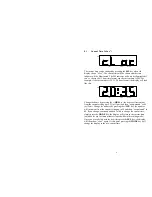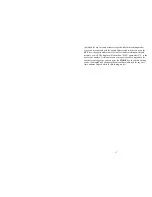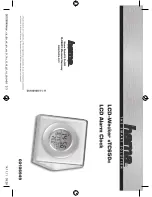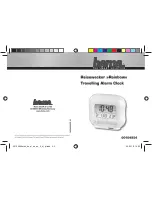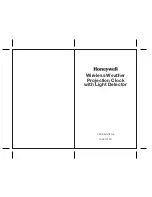
4
1.2 Theory
of
Operation
When power is first applied the LNFC-1 will beep and turn on all LED
segments. This is illustrated below.
The LNFC will then enter the
current time
mode or
idle
mode depending
upon whether or not the LocoNet is active. Each LNFC keeps its own time
internally but relies upon periodic LocoNet fast clock messages for
synchronization and new time or fast rate settings.
The LNFC has a variety of attributes or features that you can configure or
select. These include:
•
Display brightness
•
Hour format (12 or 24; DT100 throttles only support the 24 hour
format)
•
Local alarm
•
Local alarm behavior (on/off, flashing colon or alarm indicator)
•
Flashing colon when clock is running
•
Initial/default (i.e. power-up) time
•
Event Triggers (see section 1.3)
All of these attributes are local to the LNFC. You can configure them at
any time (except when the LNFC is in the idle mode) using the front panel
keys and the display. The configuration settings for the LNFC are kept in a
non-volatile (i.e. doesn’t forget when power is removed!) storage device
on the module. No batteries to replace!









